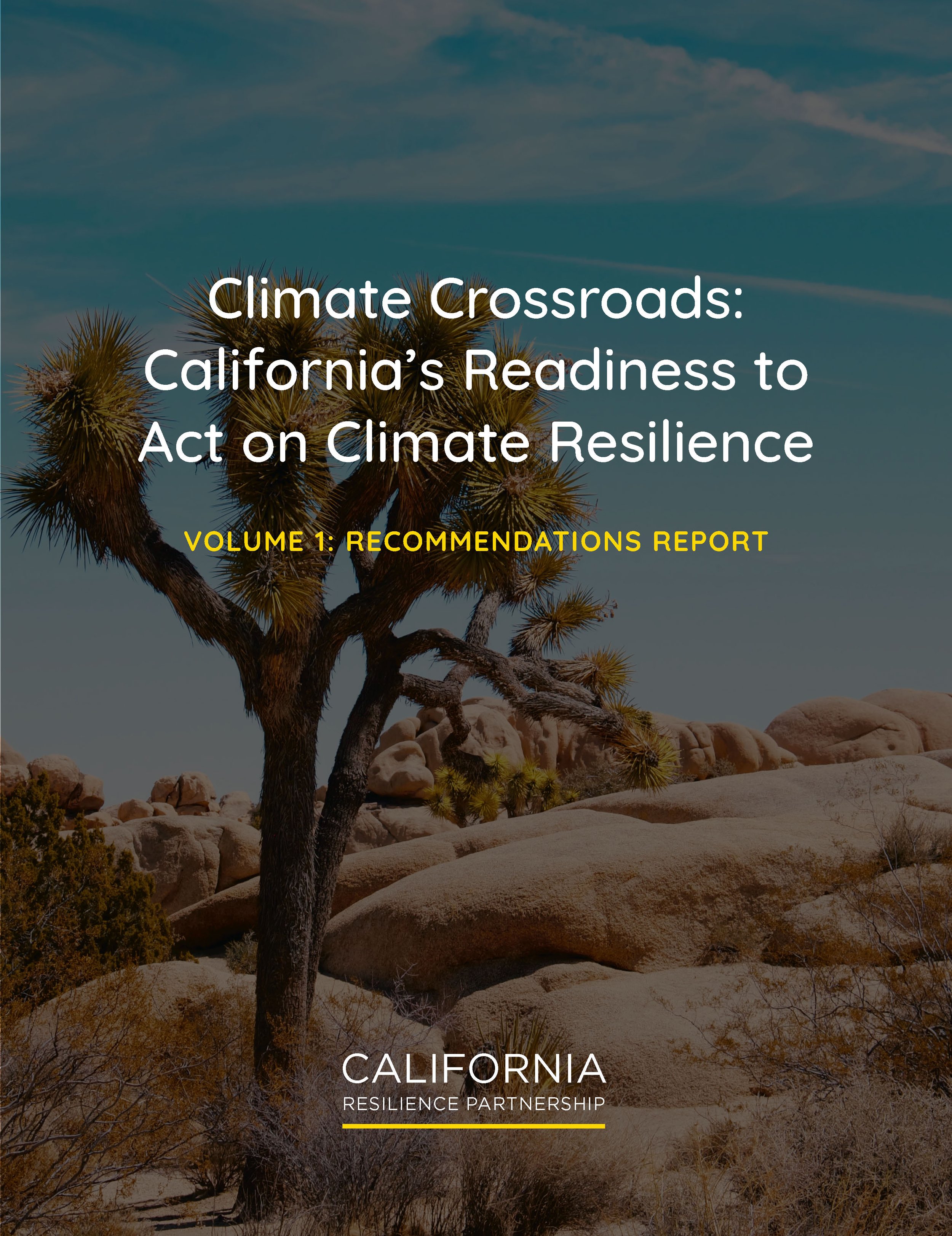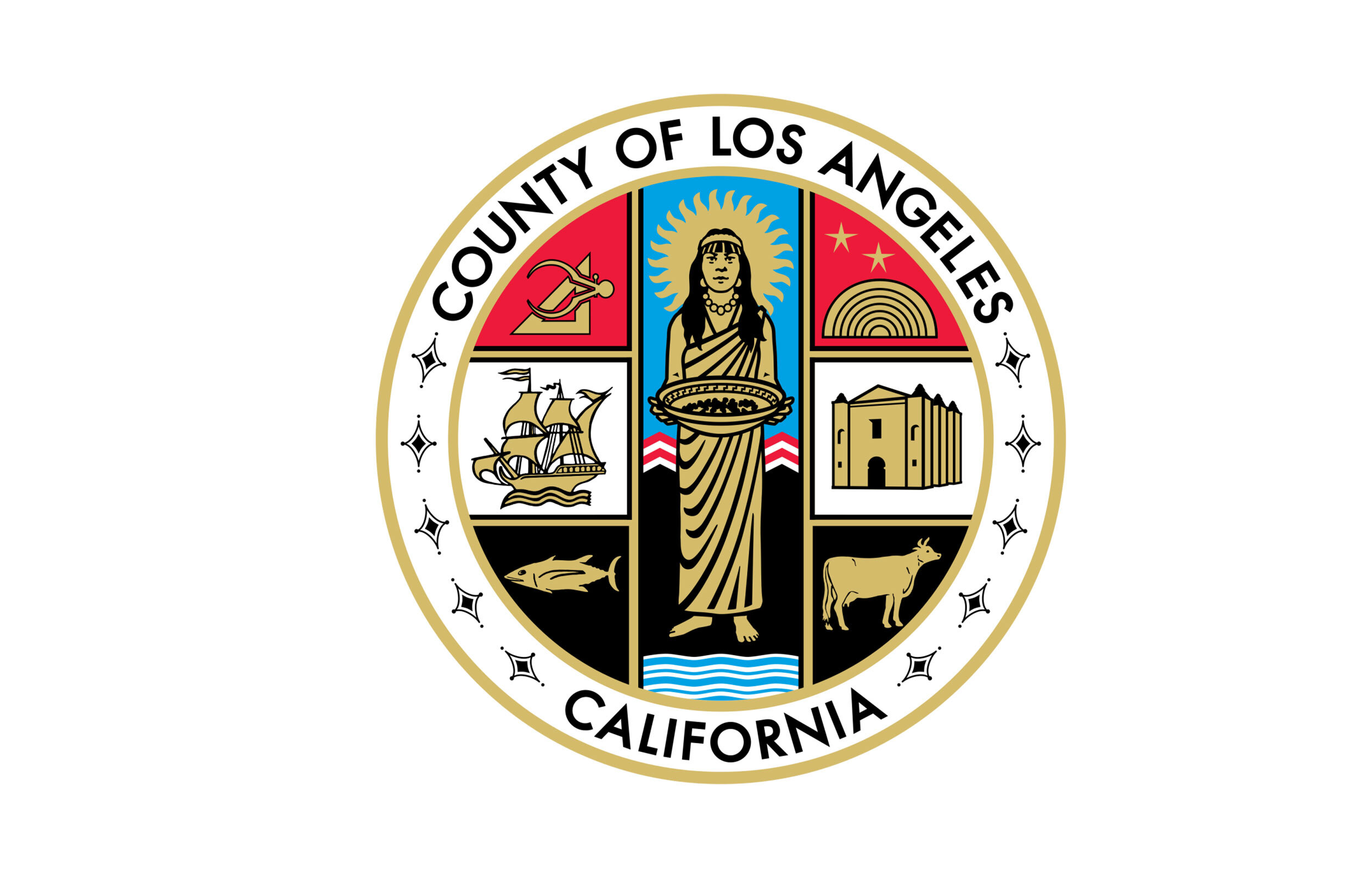
The Resilient Cities Catalyst team has worked with local partners to surface and pilot innovative solutions to fire and extreme heat in the greater Los Angeles region since early 2019. Emerging in the wake of the 2018 Woolsey Fire through the support of the Conrad N. Hilton Foundation, this effort aims to strengthen the region’s preparedness for wildfire and heat events as well as other climate threats—which are projected to become more extreme, frequent, and costly—helping to minimize their impact and ensuring the region can “bounce back” more quickly from future shocks. Because the impacts of wildfires and other climate threats are not confined to municipal boundaries, RCC is working with partners to foster greater resilience to these events through coordinated efforts at the regional scale.
The Woolsey Fire and its aftermath drove RCC and partners to identify replicable, bold ideas driven by both local governments and non-profit organizations that would strengthen critical capacities for a more resilient region: namely, the capacities of absorbing, adapting, and even transforming in the face of current and future climate driven shocks.
The Woolsey Fire in Southern California seen from space (in red) on November 19, 2018. It is estimated that 97,000 acres were burned. Photo: NASA Goddard Space Flight Center.
After engaging with local partners to source ideas and then holding a competitive application process, RCC identified four promising emerging projects, proposed by local partners, that tackle this challenge through varied tactics. All projects share common features that will help to build a more resilient region by enhancing local capacity to absorb and adapt to wildfire, extreme heat, and other growing climate threats.
Since early 2019, these local governments and nonprofit partners—including Los Angeles County, Ventura County, TreePeople, and Climate Resolve—piloted these projects through activities designed to further develop projects and prime them for replication and funding opportunities. All projects received pro bono technical assistance and connections to best practices across the globe. In addition, RCC brought the cohort of participants together at key moments to enhance connections across projects and further encourage collaborations that will foster a more resilient region.
Building on the outcomes of this work, which underscored the significant challenges that workers face, in particular, with respect to wildfire and extreme heat, with the launch of the California Resilience Partnership (CRP) in early 2021 RCC is launching the next phase of activities in the greater LA region, which will focus on identifying and developing innovative approaches to support these vulnerable populations in the context of increasing risks posed by wildfire and extreme heat.
The Challenge
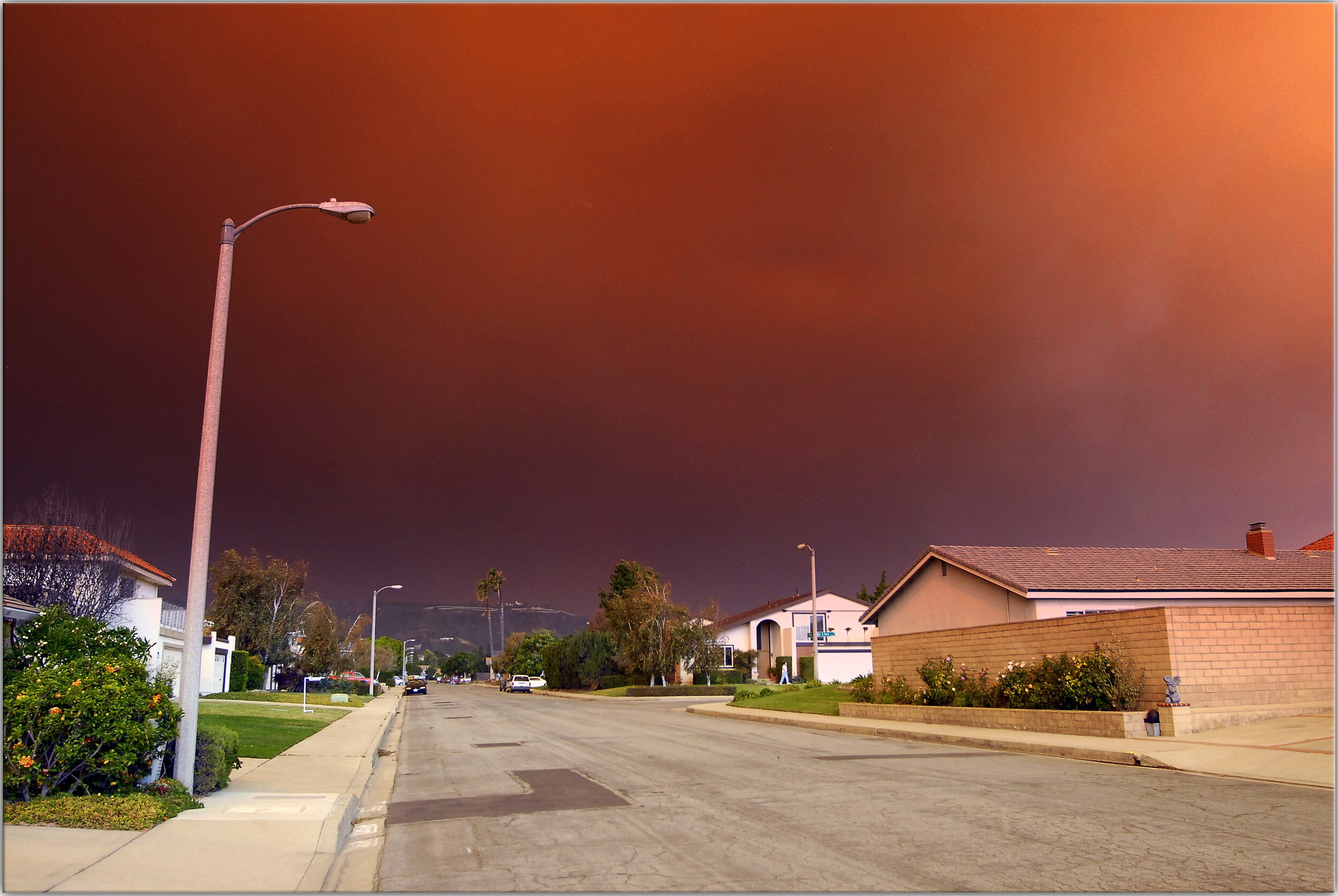
The Woolsey Fire was among the most destructive events in Southern California’s history, engulfing nearly 96,949 acres across Los Angeles and Ventura Counties, destroying or damaging over 1,800 structures, killing at least three people, and causing billions of dollars in damages and economic impact. As Woolsey raged, about 500 miles north the Camp Fire wreaked even more havoc, a simultaneous disaster that dramatically overwhelmed communities in Butte County. The response and relief effort to manage events like these is complicated and costly. Getting the Woolsey Fire to 100% containment required dedicated resources from 16 coordinating agencies and millions of dollars in special expenses. Community recovery from this event is still ongoing and will take years—even decades—and will cost billions of dollars.
Unfortunately, these fires are relatively small expressions of a broader trend toward hotter, drier, and more extreme heat and wildfire events. Fire season is becoming longer. The Fourth National Climate Assessment identifies this issue for the southwest as among the most pressing, and data on both scale and cost of these events is trending upwards year over year. Of the 20 most destructive fires in state history according to Cal Fire, 13 occurred over the past five years.
The fall 2019 and 2020 fires are another stark reminder of the urgency of preparing for future wildfire events not only in Southern California, but across the state. In 2019, historically strong Santa Ana winds responsible for wildfire spread ultimately led to unprecedented utility blackouts. And in what was dubbed the most active season on record, the 2020 season raged in Southern California until late December. Overall, Cal Fire reported that fires scorched more than 4.2 million acres in the state during 2020 alone, with five of the state’s six largest fires on record in terms of acreage having occurred within the year.
But wildfires are not the only urgent challenge affecting the greater Los Angeles region. The region faces other climate-driven shocks and stresses, like flooding, sea level rise, and extreme heat, as well as seismic risks. Longstanding stresses, particularly those related to affordability and inequality, manifest themselves on an everyday basis for Californians as the affordable housing and homelessness crisis has become more acute. These everyday stresses are particularly exacerbated during wildfires and other shocks—when the most vulnerable Californians bear a disproportionate burden.
COVID-19 and the compounding challenges of 2020 have brought to bear the interrelated nature of these shocks and stresses more than ever, making even more clear the urgent need to build resilience to future risks and challenges. As in other areas across the United States, the global pandemic continues to ravage the region. To date, Los Angeles County has tragically lost many tens of thousands of residents. Across the region, Latinx, Black, and Pacific Islander residents are dying at twice the rate of their white neighbors, laying bare racial disparities in health, as in other regions across the United States. Further, the pandemic’s ensuing economic effects—including poverty and unemployment—have served as the backdrop for ongoing racial injustice protests as Los Angeles became an epicenter of the Black Lives Matter movement decrying institutional racism. Overall, undoing these layered disparities requires a renewed focus on interdependencies connecting health and wellbeing, economy, the environment, and society.
The Opportunity

The complex 21st century challenges greater Los Angeles faces today demand innovative and integrated solutions. Because the impacts of wildfires and these other intersecting resilience challenges are not confined to municipal boundaries, a resilient approach requires tackling these challenges through coordinated action at the regional scale. Breaking down silos within and across sectors allows partners to have an impact that is greater than the sum of their parts while efficiently deploying limited resources.
RCC’s work in the region has aimed to foster partnerships and projects to set the region on a path toward greater resilience from wildfires as well as other shocks and stresses. By leveraging resources in an integrated manner to build back differently compared to business as usual, greater Los Angeles can strengthen its preparedness for shocks such as wildfire, while addressing underlying stresses.
Fortunately, despite the scale of the challenge, the region is poised to meet it, thanks to the rich ecosystem of institutions across sectors who are mobilizing to address these challenges. At the local level, communities are already beginning to feel the impact of innovative integrated planning efforts such as Resilient Los Angeles, OurCounty: The Los Angeles Countywide Sustainability Plan, and the Ventura County General Plan update. Outside of government, the region is home to many of the world’s leading philanthropic, non-profit, and academic institutions, particularly leading the way in climate research and action.
RCC’s work in greater Los Angeles was launched to complement and work with all of these actors, serving as a connector across sectors that can catalyze integrated and coordinated action. By building upon existing efforts and fostering collaboration, partners can amplify and channel all of this collective impact towards a coordinated vision for a resilient region.
The Process
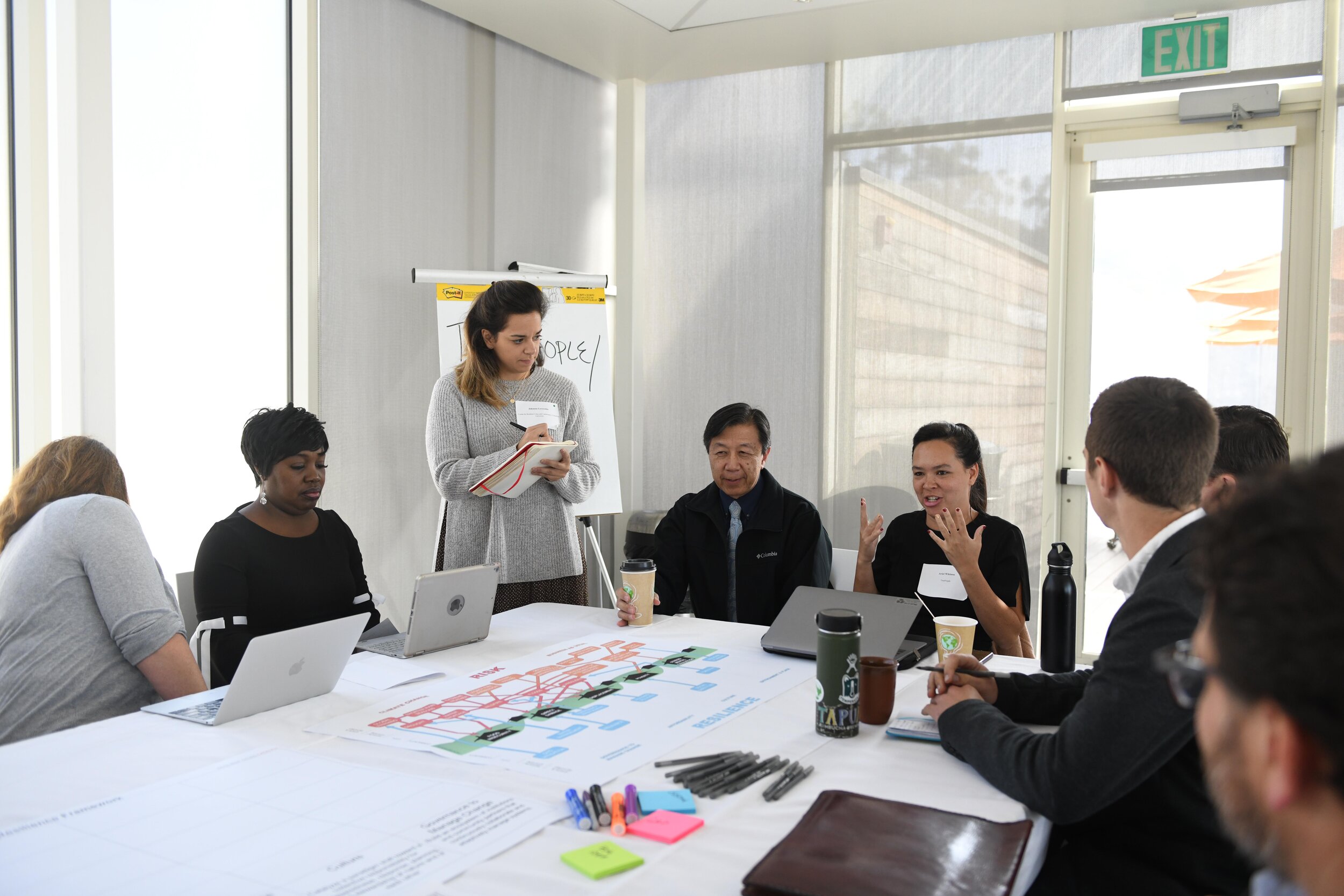
Since early 2019, with the support of the Conrad N. Hilton Foundation, Resilient Cities Catalyst has worked to identify and pilot innovative regional solutions to wildfire in the greater Los Angeles area. In the wake of the Woolsey Fire, RCC was looking for replicable, bold ideas driven by both local governments and non-profit partners, including Ventura County, Los Angeles County, TreePeople, and Climate Resolve, that would strengthen critical capacities for a more resilient region that would be more capable of absorbing, adapting, and even transforming in the face of current and future challenges.
After engaging with local partners to source ideas and then holding a competitive application process, RCC identified four promising emerging projects, proposed by local partners, that tackle this challenge through varied tactics. All projects share common features that will help to build a more resilient region by enhancing local capacity to absorb and adapt to growing climate threats, increasing understanding and awareness of risks and vulnerabilities, and integrating and sharing data across entities.
Timeline: California Resilience Partnership Process.
Approaches
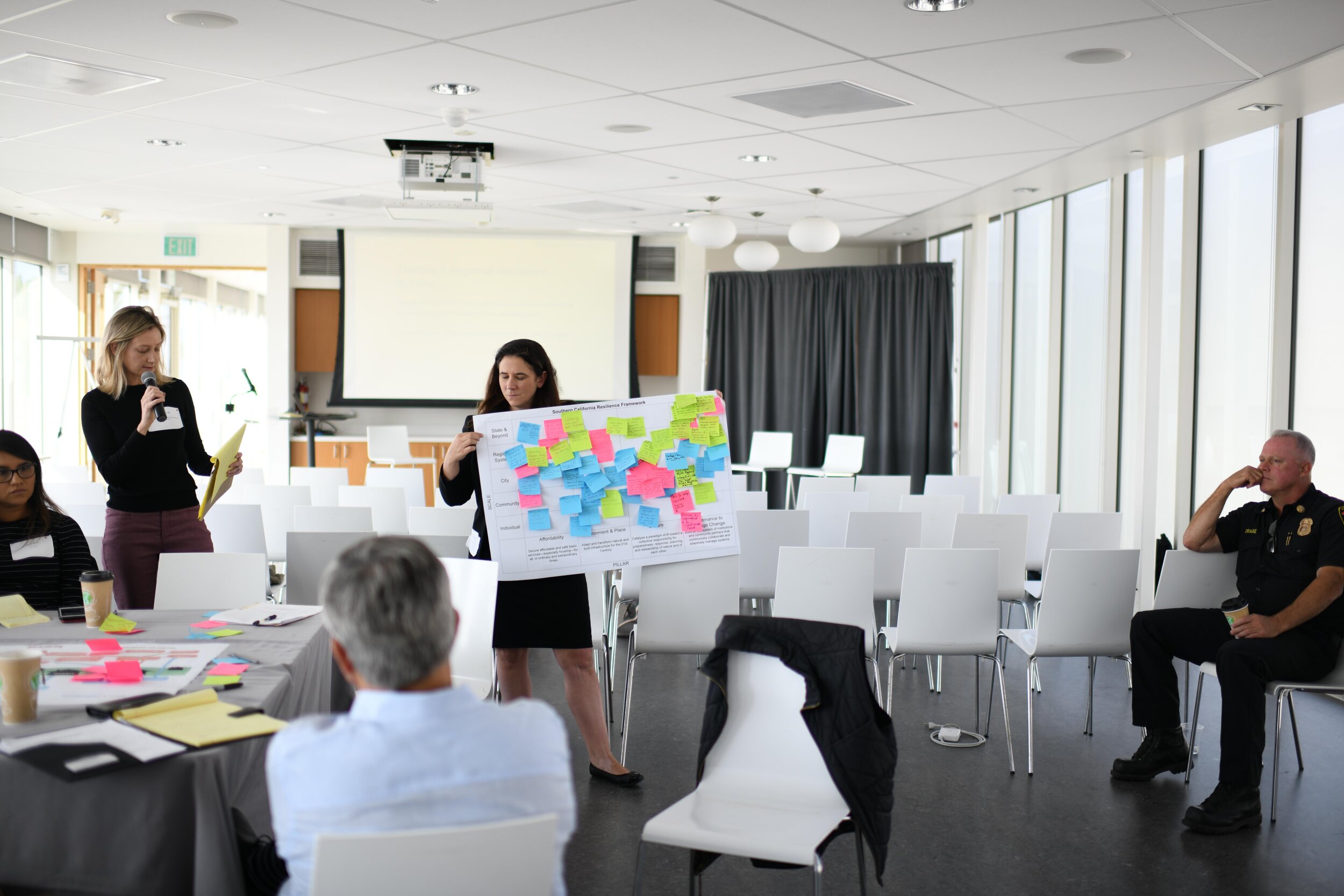
Phase 1 Approaches
1 - Policy Toolkit Supporting Displaced & Vulnerable Communities
Climate Resolve’s project originated with an investigation into displaced residents and their impacts on surrounding communities. With a lack of data available, Climate Resolve sought to quantify the number of residents displaced by the Woolsey Fire (a data point that was not fully understood at the time), and better understand their needs and the needs of the communities that absorbed them, both in the immediate aftermath and over the longer term. With wildfires and other climate driven events increasing in frequency, what steps should communities across the region be taking, and what new tools could be developed, to prepare to support residents who may be displaced as well as communities who may rapidly need to absorb these populations following adverse events?
Through original research, analysis, a sequence of interviews with experts across sectors, and convenings, the CRP partnership enabled Climate Resolve to focus on the particular needs of residents displaced by the Woolsey Fire and to explore how lessons from this event could inform future policies and tools. Climate Resolve’s work led to nine lessons and 18 recommendations for action, summarized in a report that underscores lessons learned across three key areas: for populations displaced by wildfires and other climate events; for receiving communities that provide shelter to displaced residents; and for insurance as a mechanism to reduce risk.
Homes impacted by the Woolsey Fire were chronically underinsured, and thus were insufficiently covered at time of greatest need.
In addition, as part of Climate Resolve’s research into how new insurance models could be leveraged to decrease risk for populations vulnerable to wildfire and other climate events, the organization also hosted a webinar series available online, Insurance 101 for Climate Activists, that interrogated how the insurance industry could better respond to current and future climate shocks and equipped public and nonprofit sector partners—as well as the general public—with educational resources.
Climate Resolve’s findings demonstrated that insurance is critically important, but inadequately understood, by homeowners. Homes impacted by the Woolsey Fire were chronically underinsured, and thus were insufficiently covered in their time of greatest need. Consequently, an emergent finding underscored the necessity of innovations in insurance and governance. Building off of these insights, Climate Resolve is exploring how new insurance products could be prototyped that could reduce these risks. Another key finding underscored how vulnerable community members—particularly caretakers, day laborers, farm hands, housekeepers, and landscape specialists—were most exposed to wildfire impacts, yet received inadequate public assistance to meet their level of need. Many of these communities, including undocumented individuals and those with language barriers, were inadequately notified of evacuation procedures and were also ineligible for disaster relief aid.
These pivotal findings can help channel future resources and tools towards communities that are most in need during the next phase of resilience building work in the region. All nine recommendations are ripe for further exploration and could lead to the development of innovative local and regional policies.
2 - Visualizing Vulnerability: Climate Vulnerability Assessment, Codes, and Land Use Tools
One of the largest counties in the nation in terms of size, Los Angeles County is also the most populous and among the most diverse, and home to one in four Californians. This size and complexity has led to, at times, sprawling development patterns as the County has grown in population. This has resulted in many Angelenos living in areas that are particularly vulnerable to climate driven risks, including wildfire and extreme heat. Moreover, many of these residents experience compounding impacts resulting from climate risks such as extreme heat that build upon underlying economic and social vulnerabilities.
OurCounty, the ambitious regional sustainability plan, was adopted in August 2019 by the County Board of Supervisors and outlined discrete goals to build sustainability and resilience in the face of these risks and challenges. For example, one target outlined in the plan is the goal of reducing the number of heat-stress emergency department visits per 100,000 residents by 75%. The plan also included an action oriented towards limiting development in high climate-hazard areas and calling for exploring options to limit new large-scale development in high climate-hazard areas. CRP has brought in new partnerships, technical resources, and tools to support implementation of OurCounty, particularly by helping the County develop an innovative approach in understanding interrelated climate and social vulnerabilities.
First, the CRP program has helped to support development of a best-in-class focus on heat impacts to inform the County’s climate vulnerability assessment (CVA), which will examine climate vulnerabilities of both social and physical infrastructure help guide priorities for investments in public health preparedness and response planning, community resilience, building upgrades, infrastructure improvements, and building and zoning code changes.
Researchers at Columbia University brought a global perspective and best-in-class approach to projecting heat vulnerability by assessing existing climate studies and tools in the region, summarizing global best practices in defining and studying heat vulnerability, and outlining how these tools and resources could support the County in achieving its bold climate goals.
As showcased in NASA JPL’s “LA's Hot Spots”, mapped by ECOSTRESS, the hottest (reddest) areas of the city are dark asphalt surfaces that remain unshaded throughout the day, while the cool, blue areas are higher-elevation mountain regions and clouds.
Second, the CRP partnership has also supported the County in exploring how policy tools could help reduce Angelenos’ exposure to major risks by shifting development from high hazard to lower hazard areas. Through CRP, the County was able to conduct a scan that examined different options and analyzed feasibility—including policies, regulations, and programs—that could incentivize development in lower risk areas and protect residents from climate hazards, especially wildfire risk. This analysis will support the County in implementing its OurCounty goals.
The California Resilience Partnership and the LA County Department of Public Health’s Climate Change and Sustainability Program have released the Executive Summary of the Climate Change & Health Equity Report, focused on addressing the region's climate and health risks. Click here to learn more.
3 - Ventura County Insight Center
The Ventura County Insight Center seeks to find new and collaborative methods of sharing and leveraging data to strengthen the County’s ability to prepare for, respond to, and recover from wildfire and other climate driven events. Beyond the Woolsey Fire, the Thomas, Easy, and Maria Fires all further demonstrated not only the disproportionate impacts of these kinds of shocks on already vulnerable populations, but how a more nuanced and data-driven understanding of their needs could support preparedness, communications during an adverse event, and disaster response.
For these reasons, the Insight Center pilot project, led by the Ventura County Human Services Agency in collaboration with agencies and partners across the County, is working to leverage partnerships and multiple multisector data sources in an integrated way to refine its understanding of specific community needs, challenges, and vulnerabilities. This project aims to: leverage integrated data to reduce risks and maximize resources for vulnerable populations during disasters and every day; facilitate and inspire collaboration across government entities and multi-sector partners at the regional scale to improve data driven decision-making; and pilot, learn from, and scale a human-centered database and application that could reduce risk and vulnerability in Ventura County.
The design for the Insight Center emerged from a series of County-hosted interactive workshops as well as additional convenings supported through CRP that also included subject matter experts, agency staff, and community groups. Building upon this work, the County is conducting a preliminary pilot to better understand the needs of the County’s farmworker community, which experienced particularly acute impacts during the Woolsey fire and other recent events, to begin the VC Insight Center’s initial work efforts. Lessons learned from this effort can be deployed to support other vulnerable populations across the County.
While COVID-19 has shifted implementation of the Insight Center pilot, the County is working to integrate lessons learned from the pandemic response, including from communications and outreach as well as from housing, food, and other assistance programs, into its approach. The team is incorporating research, a series of focus group discussions, as well as a community needs assessment to strengthen its understanding of the unique needs of vulnerable communities as it moves to the next phase of Insight Center design, development, and implementation.
4 - Community Organizing to Advance Resilience
The Woolsey Fire underscored the opportunity for strengthened collaboration among the public sector and community organizations in preparing communities for future wildfires and other adverse events, while strengthening cohesion on an everyday basis. Historically, however, multiple entities across sectors traditionally have operated separately, resulting in disconnected, single- purpose solutions that lack the connectivity needed to build resilience, and that do not fully incorporate community needs and feedback.
Through CRP, TreePeople has worked to pilot integrated mechanisms that address climate-influenced threats by fostering greater multi-sector collaboration, and by elevating and empowering communities.
Through CRP, TreePeople has worked to pilot integrated mechanisms that address climate-influenced threats by fostering greater multi-sector collaboration, and by elevating and empowering communities. Convening support for community symposia, research into global best practices in communities spanning from Los Angeles to Australia, interviews with experts, and development of global case studies as well as a practical community organizing handbook allowed TreePeople to create new tools that can facilitate partnerships and support communities during wildfires and other climate driven events.
Development of a case study explored lessons learned from Victoria, Australia in its approach to wildfire management and how these lessons could drive development of innovative approaches for the greater Los Angeles region. After examining governance, policy, and regulation, this project elevated an inclusive approach, tailored at the local level, that elevates the community, and a specific community’s strengths and needs, at the core of decision making. It also showcased how systems level integration can foster coordination among government and community partners. Some of the recommendations ripe for further exploration include tactics to elevate, strengthen, and connect local community organizations; foster a cultural change towards an ethos of shared responsibility; and leverage momentum and connections among existing entities to promote interoperability.
Building off of this groundwork, TreePeople recognized the need for additional, tactical tools to support communities in strengthening social cohesion and ensuring governance structures are integrated with frequent community engagement both during shocks as well as on an everyday basis. This work underscored the importance of community organizing in serving as a critical lever for resilience building. TreePeople is finalizing development of a Community Organizing around Resilience Guide highlighting best practices and lessons learned around climate resilience organizing, relationship building, and activation. The guide is being developed through research coupled with a series of interviews with community organizers across Los Angeles who are rooted in climate resilience building across vulnerable populations most susceptible to wildfire and urban heat impacts. Its specific strategies center around creating a communication loop between communities and decision makers that leads to long term planning, new policies, and additional funding for resilience implementation aligning with community needs. Ultimately, it looks to create a practical tool for community organizing as a solution to equip residents to shape their neighborhoods and ensure that projects and policies reflect their choices and needs.
Phase 2 (Launching in 2021)
Emerging from all partners’ work to date, the next phase of RCC’s work in the greater Los Angeles region will focus on identifying and scaling new approaches to address the needs of residents who were identified as among the most vulnerable during wildfires as well as during extreme heat and poor air quality events: workers. The CRP collaboration in Los Angeles so far has shown that both outdoor workers as well as indoor service sector or warehouse workers not only experience among the most significant impacts of these events, they also bear a particularly significant burden of both the economic and health impacts as a result of the ongoing pandemic.
Launching in 2021, a new phase of activities will seek to advance new approaches that could support these communities. Mechanisms being explored include unified policy protections or regulations around heat standards and air quality, especially as it relates to protecting vulnerable workers. CRP’s public-private partnership model will help to bridge the network of community organizations and government partners and bring in global best practices as well as tools & resilience building activities to help tackle this challenge at the intersection of economic, health, and climate resilience.
Resource Library
Course
Climate Resolve hosted Insurance 101 for Climate Activists in the summer of 2020.
Click here to learn more.
Reports
CRP Resource Library
These best practices feature CRP projects as well as projects supported by our regional partners. Check this space frequently, as we continue to add additional resources.
The Cardiff State Beach Living Shoreline
Encinitas
Course
Climate Resolve hosted Insurance 101 for Climate Activists in the summer of 2020.
Click here to learn more.
Reports
CRP is expanding to additional regions across California. We’ll be announcing two new regions in 2021.
In collaboration with local partners and funders, RCC will launch regional processes that address each region’s specific resilience challenges. These sequences of regional activities will be geared toward generating the most relevant and highest impact local initiatives and projects. If you are a funder, public sector representative, or non-profit interested in learning more about potential partnerships in future regions, please reach out.
Contact:
contact@rcc.city




























